Shock Absorber Health Checker
Symptom Assessment
Check all symptoms you experience while driving
Visual Inspection
Check your vehicle's shocks for visible signs of wear
If your car suddenly sounds like a rusty spring bouncing off a curb, you’re not imagining things. That clunking, thumping, or rattling noise? It’s your shocks screaming for help. Bad shocks don’t just make noise-they turn your daily drive into a bumpy, unpredictable ride. And if you ignore it, you’ll end up wearing out tires faster, losing control on wet roads, and spending way more on repairs down the line.
What Does a Bad Shock Absorber Sound Like?
There’s no single sound, but here’s what most drivers hear when shocks are failing:
- Clunking or knocking when you hit a bump or go over a speed bump-this is the most common sign. It’s not the tire hitting the wheel well; it’s the shock’s internal parts slamming together because the piston has lost hydraulic pressure.
- Thumping or booming over rough roads, especially at low speeds. This happens when the shock can’t dampen the spring’s movement, so the spring keeps bouncing after the initial impact.
- Rattling from the undercarriage, especially when driving on gravel or uneven pavement. Loose mounting hardware or worn bushings cause this, and it often gets louder over time.
- Squeaking or creaking when turning or going over bumps. This isn’t always the shock itself-it’s often the rubber bushings that connect the shock to the chassis, dried out and cracked from heat and age.
- Humming or buzzing at highway speeds. If your car feels like it’s floating or vibrating through the steering wheel, the shocks may be too weak to keep the tires planted.
These sounds aren’t just annoying-they’re warnings. A 2023 study by the New Zealand Transport Agency found that vehicles with worn suspension components were 40% more likely to lose control during emergency maneuvers. That’s not a risk you want to take.
Why Do Shocks Make Noise When They Fail?
Shocks don’t just absorb bumps-they control how fast your springs compress and rebound. Inside each shock is a piston moving through oil. That oil flows through tiny valves to slow down movement. When the shock wears out, those valves get clogged, the seals leak, or the piston rod bends. Suddenly, the oil doesn’t flow right, and metal starts hitting metal.
Think of it like a broken door hinge. When it’s new, it closes smoothly. When it’s worn, it squeaks, rattles, and slams shut. Shocks work the same way. The noise comes from parts that used to glide now grinding, bouncing, or rattling because they’ve lost their damping ability.
Worn bushings also play a big role. Those rubber rings at the top and bottom of the shock absorb vibration and keep everything tight. When they crack or turn to dust (which happens fast in Auckland’s salty coastal air), the shock moves around inside its mount. That’s when you hear that loud clunk every time you hit a pothole.
How to Tell If It’s the Shocks-or Something Else
Not every noise comes from bad shocks. Other suspension parts can make similar sounds:
- Struts (which include the shock and spring in one unit) can make the same clunking noise. If your car has struts instead of separate shocks, the problem is the same-just harder to replace.
- Control arm bushings wear out and cause clunking when turning or braking. The noise often sounds like it’s coming from the front wheels.
- Ball joints can rattle or pop when steering. This is dangerous-worn ball joints can cause a wheel to detach.
- Stabilizer bar links make a clinking sound over bumps. Easy to fix, but often mistaken for shock problems.
Here’s a quick test: push down hard on one corner of your car and let go. If it bounces more than once or twice, your shocks are worn. A healthy shock should stop the bounce in one or two movements. If your car keeps bobbing like a boat in rough water, it’s time to check the shocks.
Also, look for oil leaks. If you see dark, greasy residue on the shock body, that’s a clear sign the seal has failed. Even a small leak means the shock is losing hydraulic fluid-and that means it’s losing its ability to control movement.
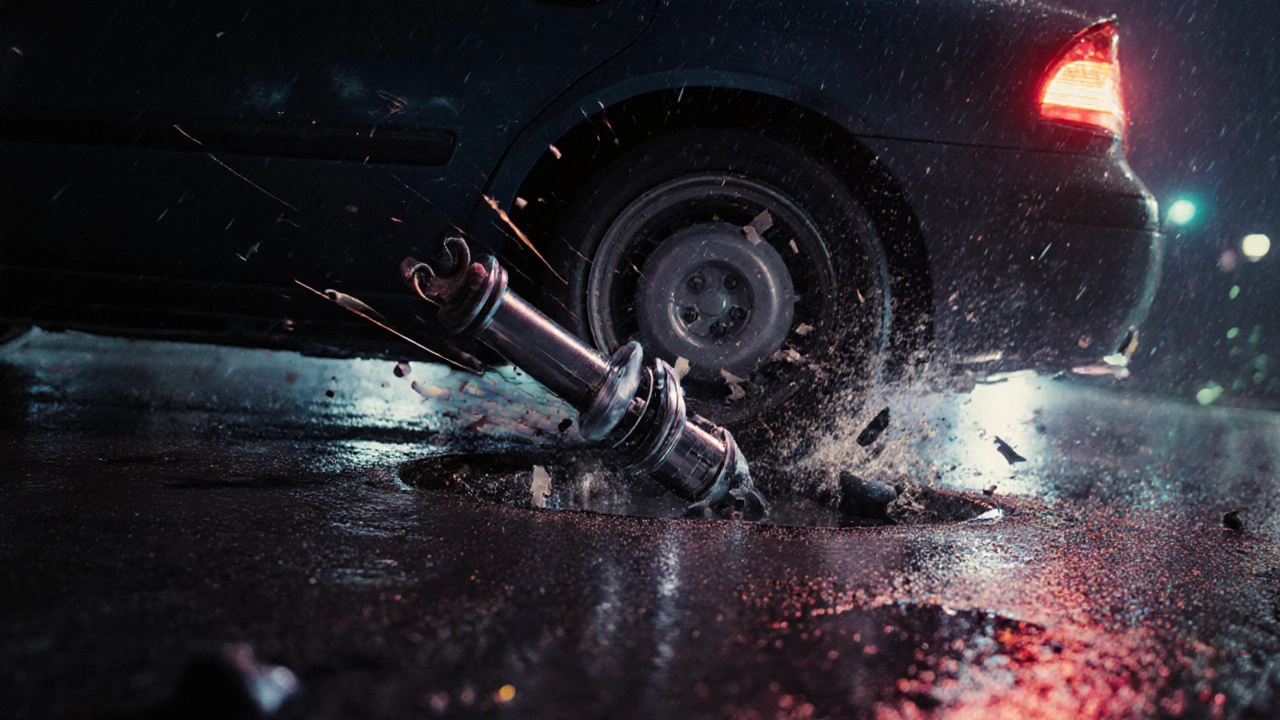
What Happens If You Ignore Bad Shocks?
Ignoring noisy shocks doesn’t just make your ride uncomfortable. It puts you at risk.
- Longer stopping distances: Worn shocks reduce tire contact with the road. In wet conditions, that can add 20% to your braking distance.
- Uneven tire wear: Shocks keep tires flat on the road. When they fail, tires start cupping-creating bald spots and scalloped edges. You might need new tires every 20,000 km instead of 50,000 km.
- Damage to other parts: The extra vibration from bad shocks wears out steering components, wheel bearings, and even the chassis over time.
- Loss of control: On sharp turns or emergency swerves, your car will feel loose and unpredictable. In heavy rain or on gravel, that can lead to skidding or rollovers.
One Auckland mechanic told me about a customer who drove for six months with blown shocks. When he finally brought it in, the tires were ruined, the control arms were cracked, and the steering rack was leaking fluid. The repair bill was three times what a simple shock replacement would’ve cost.
What to Do When Shocks Are Bad
If you hear those sounds and your car bounces like a pogo stick, don’t wait. Here’s what to do:
- Do the bounce test on all four corners. If any corner bounces more than twice, replace the shocks on that axle.
- Check for leaks. Look for oil on the shock body. Even a thin film means it’s failing.
- Inspect bushings. Look for cracks, splits, or missing rubber. If they’re brittle or gone, replace them with the shocks.
- Replace in pairs. Always replace shocks or struts in pairs-front or rear. Mixing old and new shocks creates uneven handling.
- Get a professional alignment after replacement. Worn shocks change how the wheels sit. Without an alignment, your tires will wear unevenly right away.
Most shock absorbers last between 80,000 and 100,000 km. But if you drive on rough roads, gravel, or coastal routes like the Coromandel Peninsula, they’ll wear out faster. In places like Auckland, where salt air and potholes are common, 60,000 km is a realistic lifespan.
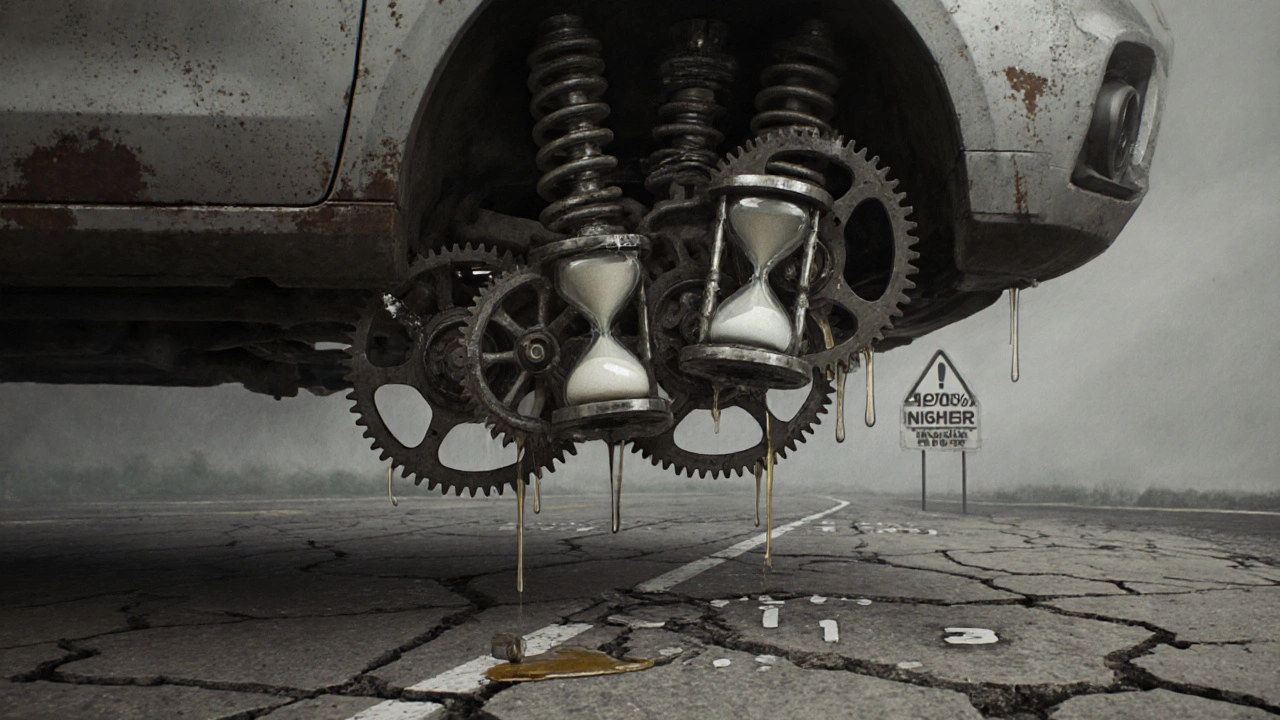
What to Expect When Replacing Shocks
Replacing shocks isn’t a DIY job for everyone, but it’s not impossible. If you’ve ever changed brake pads, you can handle it with the right tools.
Expect to pay between $250 and $500 per pair for quality aftermarket shocks (like KYB, Monroe, or Bilstein). OEM parts from Toyota, Ford, or Holden will cost more-up to $800 per pair. Labor usually runs $150-$250 per axle.
Don’t go for the cheapest shocks. Cheap ones don’t last, and they won’t improve your ride. You want ones built for your car’s weight and typical driving conditions. If you haul gear or tow, get heavy-duty models.
And don’t forget the bushings. Most shock kits come with new ones. If they don’t, buy them separately. It’s a small cost that makes a big difference in how quiet and smooth the ride feels afterward.
How to Prevent Shock Failure
There’s no magic trick to make shocks last forever, but you can slow down the wear:
- Avoid potholes and rough roads when you can. Even small impacts add up over time.
- Wash your undercarriage every few months, especially after winter. Salt eats away at mounts and bushings.
- Get your suspension checked during every oil change. A quick visual inspection takes 2 minutes and can catch problems early.
- Don’t overload your car. Excess weight puts extra stress on shocks and springs.
If you notice any of those noises-clunking, thumping, rattling-don’t shrug it off. Your car isn’t just being noisy. It’s telling you it’s losing control. And that’s not something you can afford to ignore.
Can bad shocks cause steering problems?
Yes. Worn shocks reduce tire contact with the road, making steering feel loose or unresponsive. You might notice your car drifting or needing constant correction on the highway. This isn’t just a comfort issue-it’s a safety risk, especially in wet or windy conditions.
Do I need to replace all four shocks at once?
It’s strongly recommended. Replacing only one or two shocks creates uneven damping, which leads to poor handling and uneven tire wear. Always replace shocks in pairs-front or rear-and ideally all four at once for the best performance and safety.
How long do shocks usually last?
Most shocks last between 80,000 and 100,000 kilometers. But in areas with rough roads, salt, or frequent heavy loads, they can wear out as early as 60,000 km. If you drive on gravel roads, coastal highways, or frequently carry heavy cargo, check them every 40,000 km.
Is it safe to drive with bad shocks?
It’s not safe for long. While you might not break down immediately, worn shocks reduce braking performance, increase stopping distances, and make your car harder to control in emergencies. In wet weather or during sudden maneuvers, this can lead to accidents. Get them checked as soon as you notice unusual noises or bouncing.
Can I just replace the shocks and not the springs?
Yes, if your springs are still in good condition. Shocks and springs are separate components. Springs support the car’s weight; shocks control the spring’s movement. If the springs aren’t sagging, broken, or corroded, you can replace just the shocks. But always inspect them during replacement.
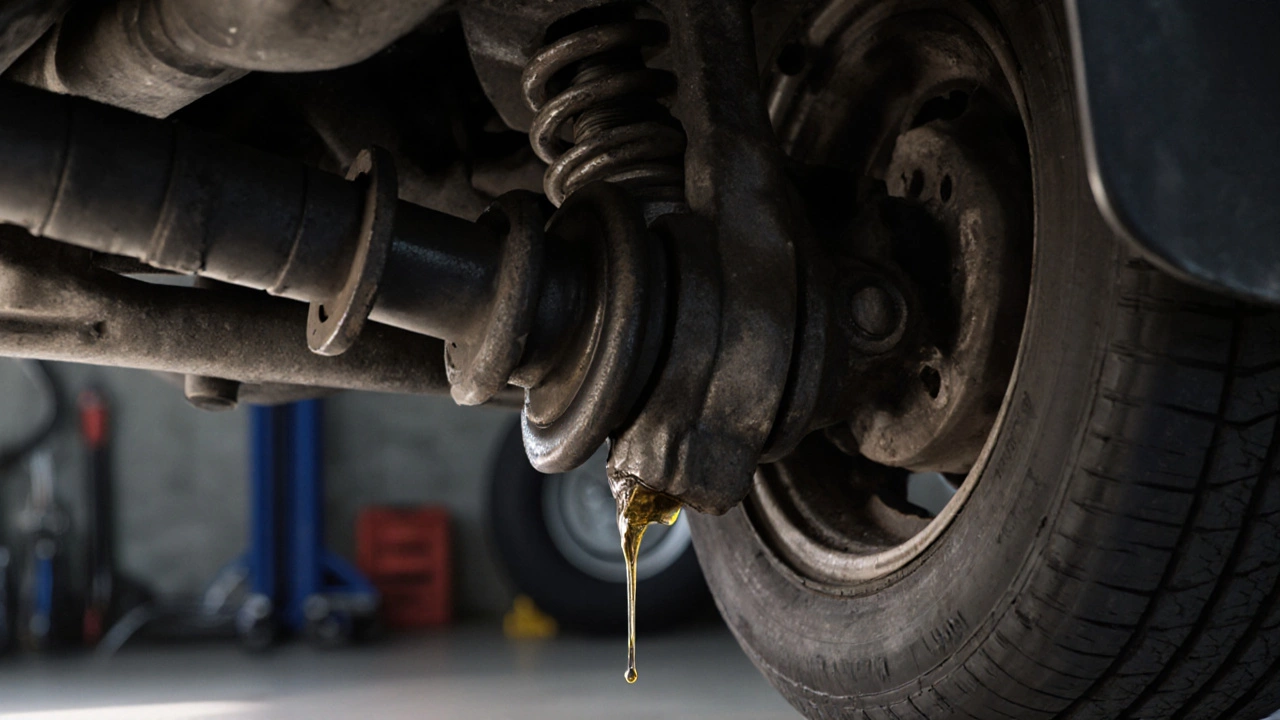
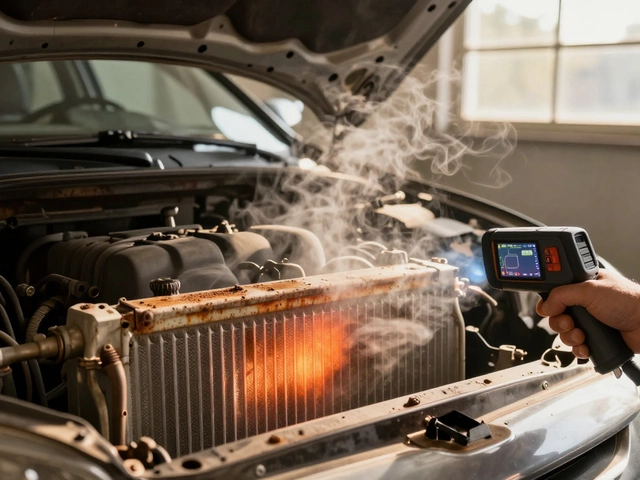
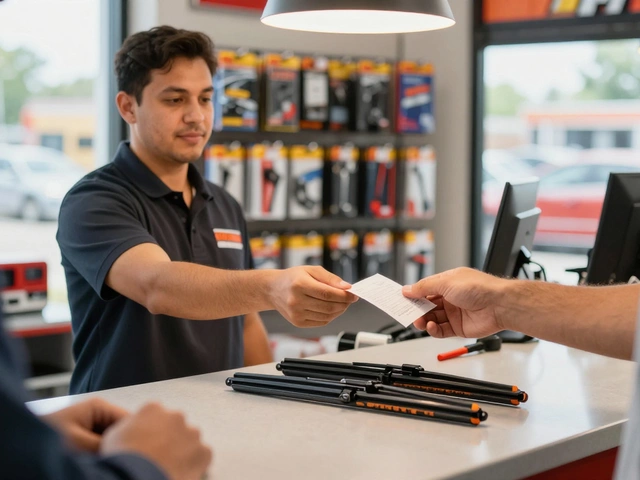
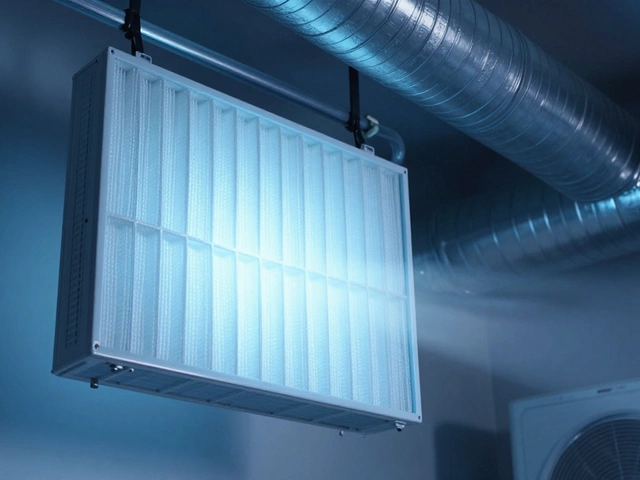
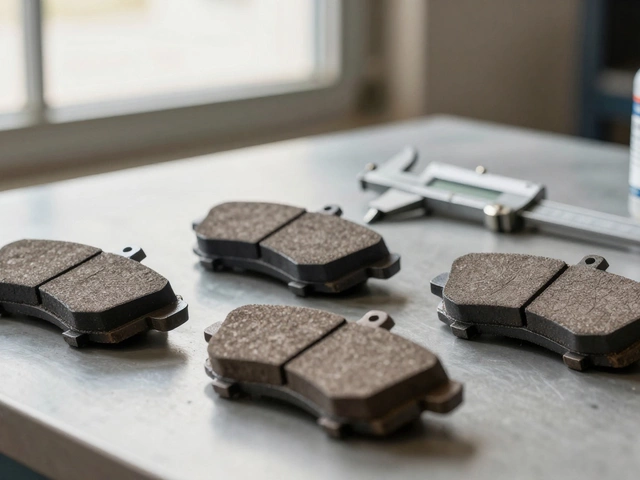
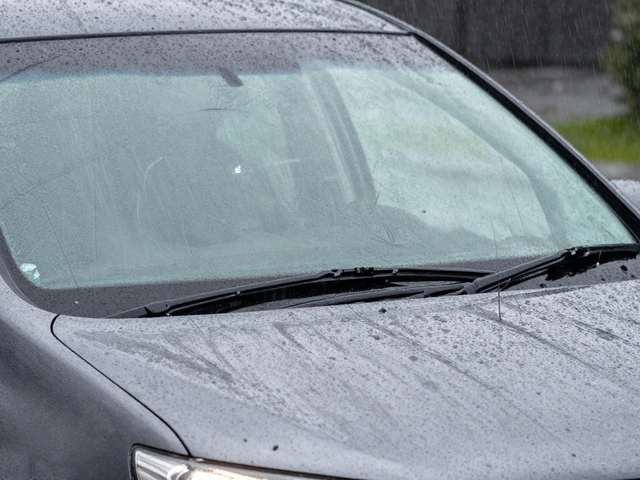

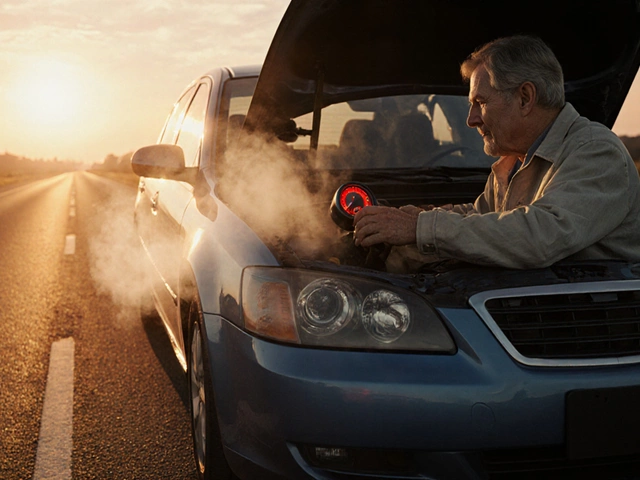
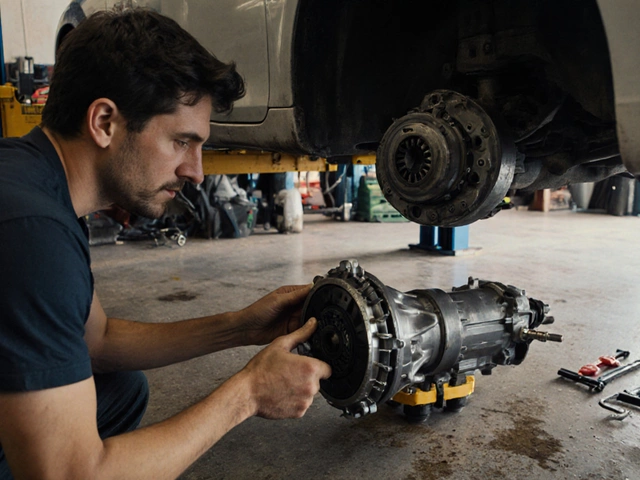


Write a comment